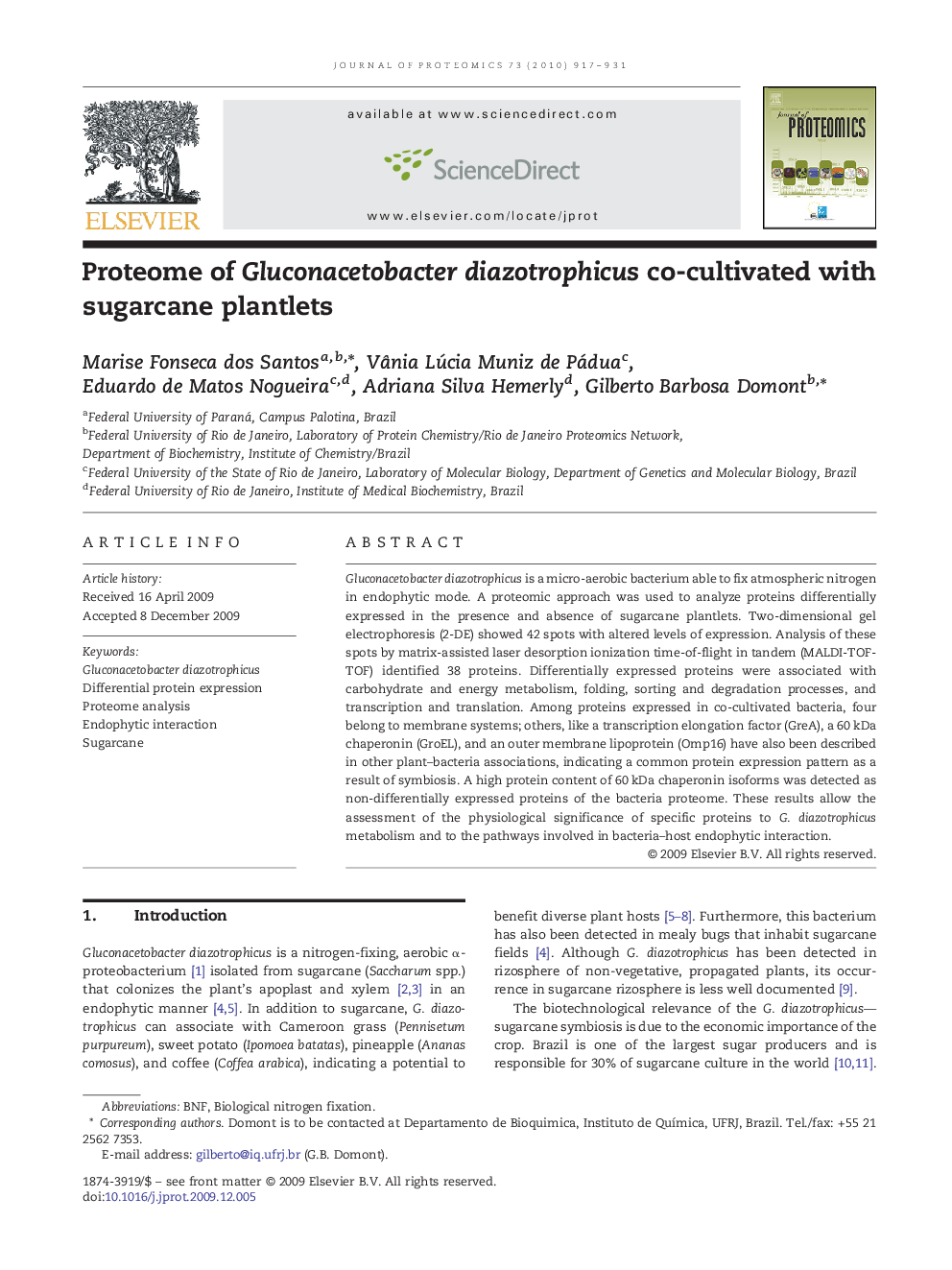| Article ID | Journal | Published Year | Pages | File Type |
|---|---|---|---|---|
| 1226159 | Journal of Proteomics | 2010 | 15 Pages |
Gluconacetobacter diazotrophicus is a micro-aerobic bacterium able to fix atmospheric nitrogen in endophytic mode. A proteomic approach was used to analyze proteins differentially expressed in the presence and absence of sugarcane plantlets. Two-dimensional gel electrophoresis (2-DE) showed 42 spots with altered levels of expression. Analysis of these spots by matrix-assisted laser desorption ionization time-of-flight in tandem (MALDI-TOF-TOF) identified 38 proteins. Differentially expressed proteins were associated with carbohydrate and energy metabolism, folding, sorting and degradation processes, and transcription and translation. Among proteins expressed in co-cultivated bacteria, four belong to membrane systems; others, like a transcription elongation factor (GreA), a 60 kDa chaperonin (GroEL), and an outer membrane lipoprotein (Omp16) have also been described in other plant–bacteria associations, indicating a common protein expression pattern as a result of symbiosis. A high protein content of 60 kDa chaperonin isoforms was detected as non-differentially expressed proteins of the bacteria proteome. These results allow the assessment of the physiological significance of specific proteins to G. diazotrophicus metabolism and to the pathways involved in bacteria–host endophytic interaction.
